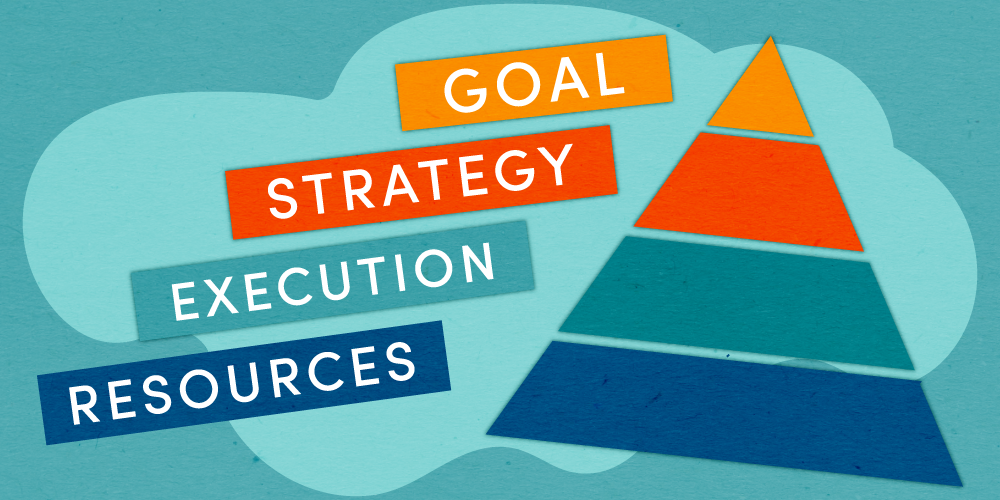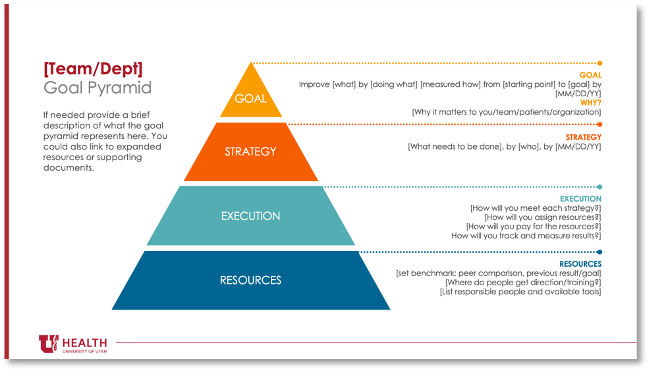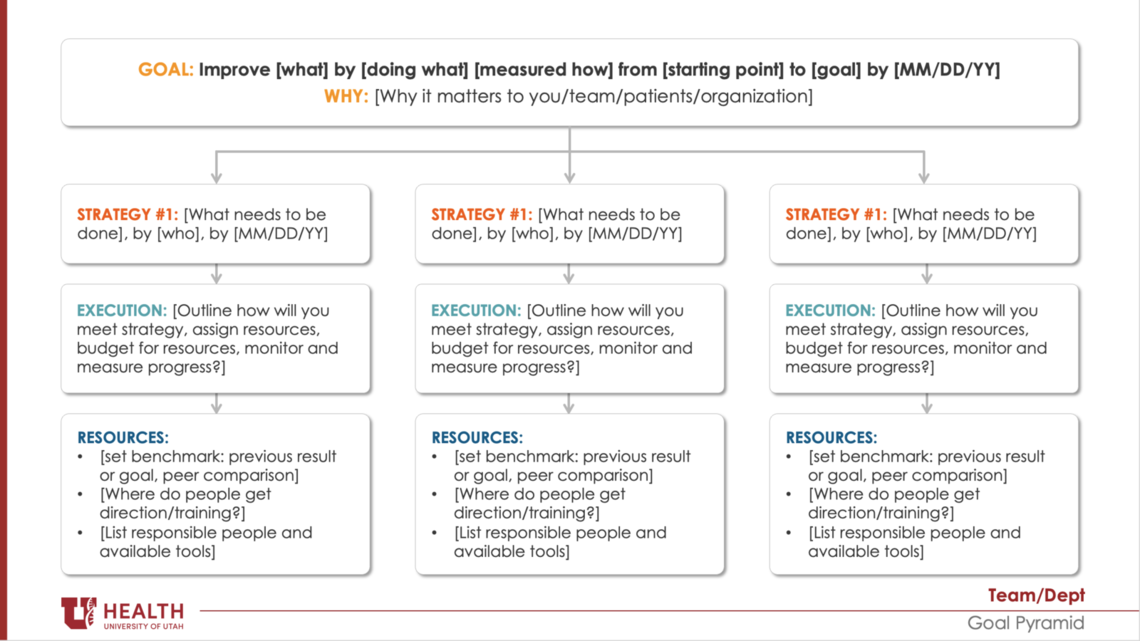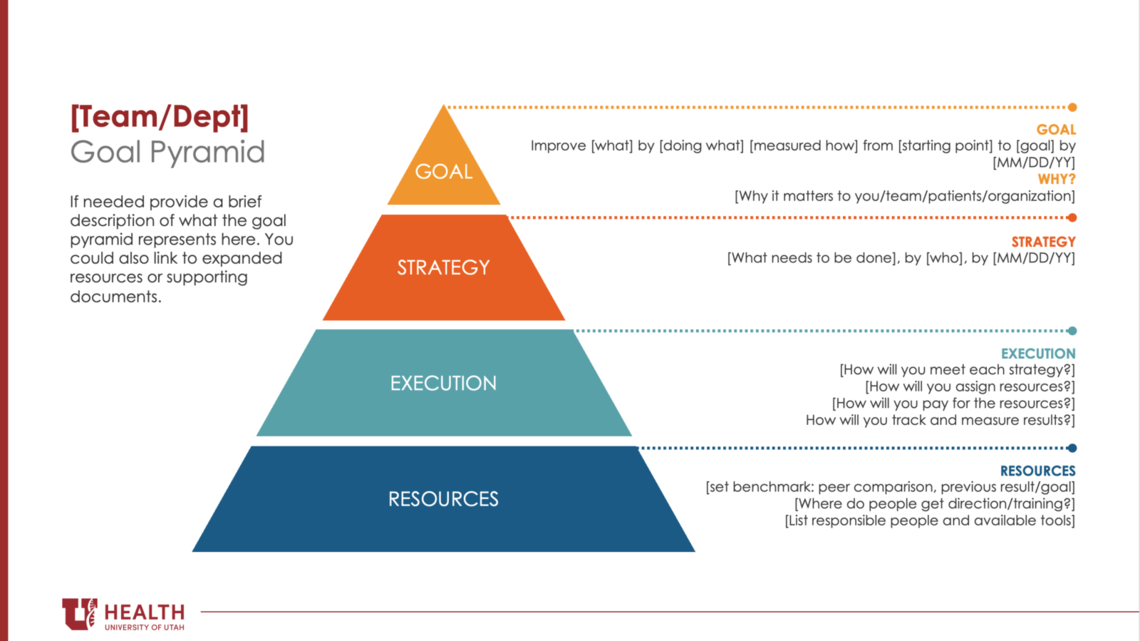trategic planning can feel overwhelming for frontline leaders who are often responsible for translating organizational “big ideas”—like mission, vision, and strategic priorities—into smaller, actionable tactics their teams can address.
That’s where a goal pyramid comes in. A goal pyramid is a strategic planning framework that provides an easy-to-follow structure for strategic planning at the individual, team, and department level. Goal pyramids provide both structure and flexibility—they are easy to modify as the work evolves.
Just like the name indicates, a goal pyramid consists of four steps that move from small to progressively larger action items.
How to build a Goal Pyramid
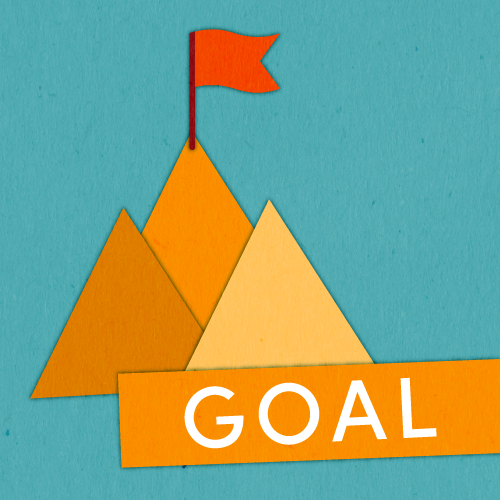 The goal pyramid begins with setting one main goal. The goal should be SMART (Specific, Measurable, Attainable, Relevant, Time-bound). To set a goal, leadership must first define their WHY:
The goal pyramid begins with setting one main goal. The goal should be SMART (Specific, Measurable, Attainable, Relevant, Time-bound). To set a goal, leadership must first define their WHY:
- Why are we in health care?
- Why should patients receive care from us?
- Why do we want to achieve this specific goal?
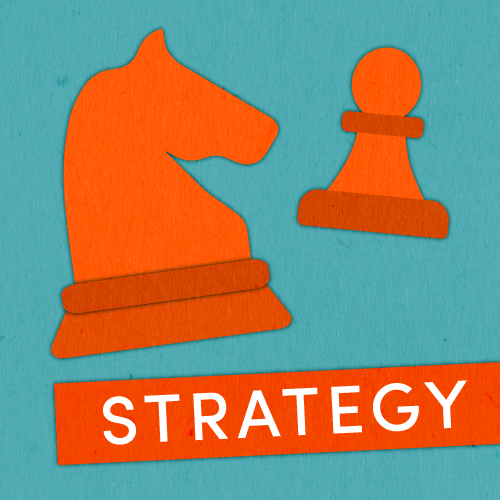 Once you’ve set a goal, it’s time to create strategies—plans or actions—for achieving that goal. The best strategies align with the WHY to support the goal. When creating strategies, start by considering the WHAT, WHO, and WHEN:
Once you’ve set a goal, it’s time to create strategies—plans or actions—for achieving that goal. The best strategies align with the WHY to support the goal. When creating strategies, start by considering the WHAT, WHO, and WHEN:
- What needs to be done to meet the goal?
- Who will be responsible for putting the strategies into action?
- When will the strategies be put into place?
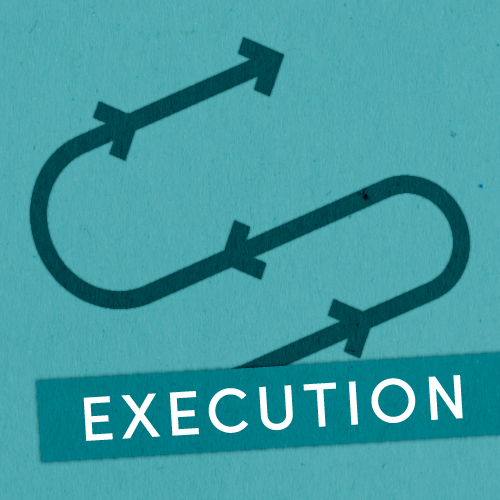 After creating your strategies, it’s time to decide how to put those plans into action. This involves developing tactics that provide direction on how to implement. Many people confuse strategies with tactics: a strategy is the plan, while a tactic is how you execute on the plan. Execution involves answering the HOW:
After creating your strategies, it’s time to decide how to put those plans into action. This involves developing tactics that provide direction on how to implement. Many people confuse strategies with tactics: a strategy is the plan, while a tactic is how you execute on the plan. Execution involves answering the HOW:
- How will you meet each strategy?
- How will you assign resources?
- How will you pay for the resources?
- How will you track and measure your results?
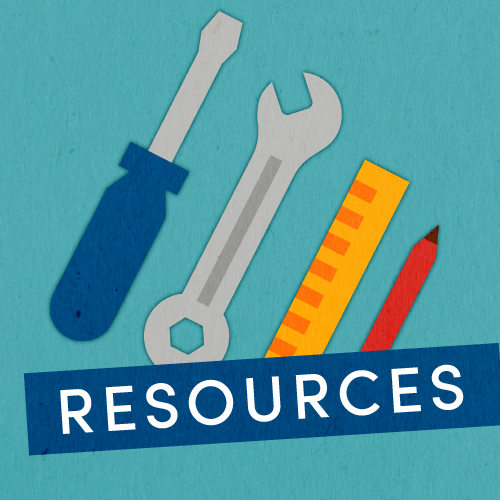 After determining the tactics for executing your strategies, it’s time to assign the resources (i.e., people and tools) for implementing the tactics. Goal setting is great but doing the work is what moves the organization forward and helps your team realize success. This involves creating and implementing your operational plans, which should:
After determining the tactics for executing your strategies, it’s time to assign the resources (i.e., people and tools) for implementing the tactics. Goal setting is great but doing the work is what moves the organization forward and helps your team realize success. This involves creating and implementing your operational plans, which should:
- Set benchmarks to measure performance
- Provide direction on making processes easier to achieve
- Equip your people with the tools to do the work
Give it a try now
Download Goal Pyramid Template
If you’re looking for something a little snazzier, here’s a PowerPoint template you can adapt to suit your needs.
The best way to start is with paper and a pen. Draw a rough triangle and fill in the gaps. Whiteboards are great for visually engaging your team in the process.
Kripa Kuncheria
You’ve heard of setting goals, but what about a goal setting framework? Project management expert Kripa Kuncheria helps us organize our teams’ efforts by outlining goal setting frameworks with simple step-by-step options to try right now.
Leading a project can be tough, but with project management expert Kripa Kuncheria’s step-by-step guide, you’ll master planning, execution, and monitoring for success.
SMART Goals are a great starting point for any project. Project management expert Kripa Kuncheria helps us organize our teams’ efforts by outlining this goal setting framework with a simple step-by-step guide to try right now.
